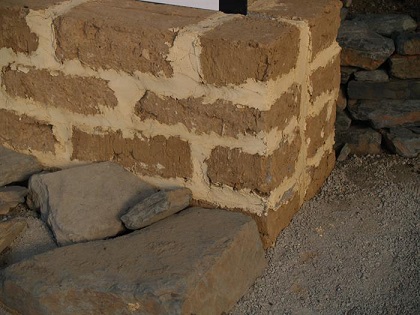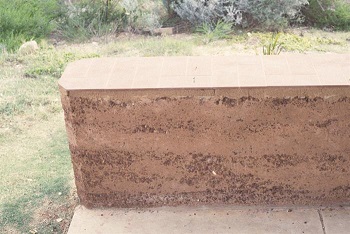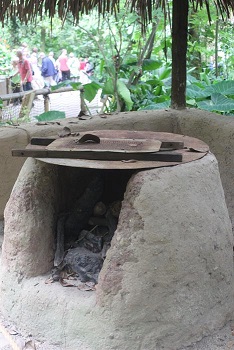 People have been building with earth for thousands of years. You can build a surprising range of things with earth construction including, homes, sheds, garden walls, ovens, fortifications, and even paving slabs.
People have been building with earth for thousands of years. You can build a surprising range of things with earth construction including, homes, sheds, garden walls, ovens, fortifications, and even paving slabs.
There are many different ways of building with earth:
- Adobe -also known as mud brick
- Pise -also known as rammed earth
- Wattle and Daub
- Cob
Earth building can be inexpensive, and extremely rewarding.
John Mason built a 30 square metre building as the first office for this school in 1983; with mud brick and recycled materials from a wreckers yard for less than the cost of one weeks wages.
Some government authorities will restrict earth building more than others (eg. Building codes need to be adhered to for homes or larger buildings), but the scope of earth building, and its applications are broad, and there are opportunities to construct in a creative way almost anywhere, and with almost any soil, if you understand what you are doing.
Pise Building
A rammed earth (pise) wall is basically a large pressed earth wall. Don't try to build a pressed earth house without knowing exactly what you should do. Read this information carefully and any other you can get hold of.
After finding the right kind of soil, the next most important thing to do is to build the "form' or mould to ram the earth in.
Rammed Earth Tampers
Most tampers are of the hand type, but an air tamper works faster though more expensive.
- Hand tamper: Weight is important as the heavier it is the faster the ramming process.
- Small tampers weigh about 8kg. Larger tampers for larger men weigh 9kg - 13.5kg. The striking face is also important - as a general rule the tamper should weigh 150 grams for every square centimetre of tamper face. Eg. a 100mm X 100mm square face tamper should weigh 15kg.
- Air tamper: One man can tamp soil in one-half to one-third the time that he could if using a hand tamper. It should be a long-stroke machine, of moderate feed, that delivers powerful blows.
Pise Construction
 Thickness of tamped layers: The thickness of each loose layer of earth before tamping should not exceed 25mm more than the width of the tamper face.
Thickness of tamped layers: The thickness of each loose layer of earth before tamping should not exceed 25mm more than the width of the tamper face.
Procedure: The first step is to install the termite shields if required. Bend them flat against the foundation wall. Then, place the forms over the foundation and draw them up tight against it with the bottom row of bolts, wires, etc. The end gates and spacer blocks are then inserted and the top row of bolts tightened. You are now ready to start ramming.
When a section is completed, the forms are moved, fastened tightly at their new location and the ramming recommences. Ram a complete section around the house before going up a level. Joints between layers should be staggered.
The first section that should be rammed are the corners of the house. It is important that the corner forms are perfectly plumbed or vertical. A RAMMED EARTH WALL THAT IS BUILT LEANING CAN NEVER BE STRAIGHTENED.
Protect newly constructed walls sections until they gain strength. If rain is due, cover walls with plastic or other water-proof material. The wall itself should be kept just moist during the curing period so the use of moist sacks and mats is advisable.
Before ramming a new section, scratch the top of the lower completed section about 10mm deep. If the completed section is dry, moisten the top slightly. This will improve the bond between the two layers.
Once the soil mix is prepared, 2 to 4 workers can be used to construct the wall. Two men can do all the ramming and one shovels the soil mix in the forms.
Regardless of how good the soil mix is, a rammed earth house will not last long unless it is tamped enough and unless the moisture content of the mix is right.
Ramming should be continued on each layer until the noise from the ramming tool changes from a dull thud to a clear ringing sound. If the tampered soil will not ring regardless of the numbers of tamps, then something is wrong with the mix - usually it is too wet.
Doors and window openings are done much in the same way as concrete framing surrounds. These surrounds need to be of sturdy construction and well braced.
REINFORCEMENT: Barbed wire, woven wire or small metal rods may be used to strengthen a rammed wall. Reinforcing is not as effective in destabilised soil walls as it is in stabilised material. Reinforcement around doors and windows will also strengthen the wall.
Learn more about Earth Building in our Mud Brick Construction Course